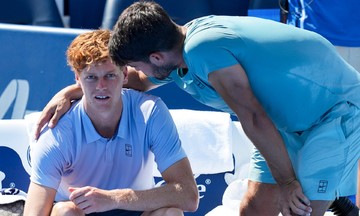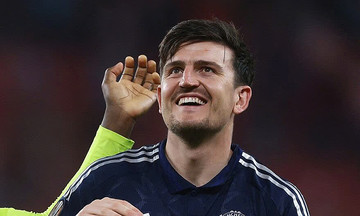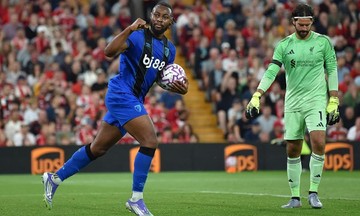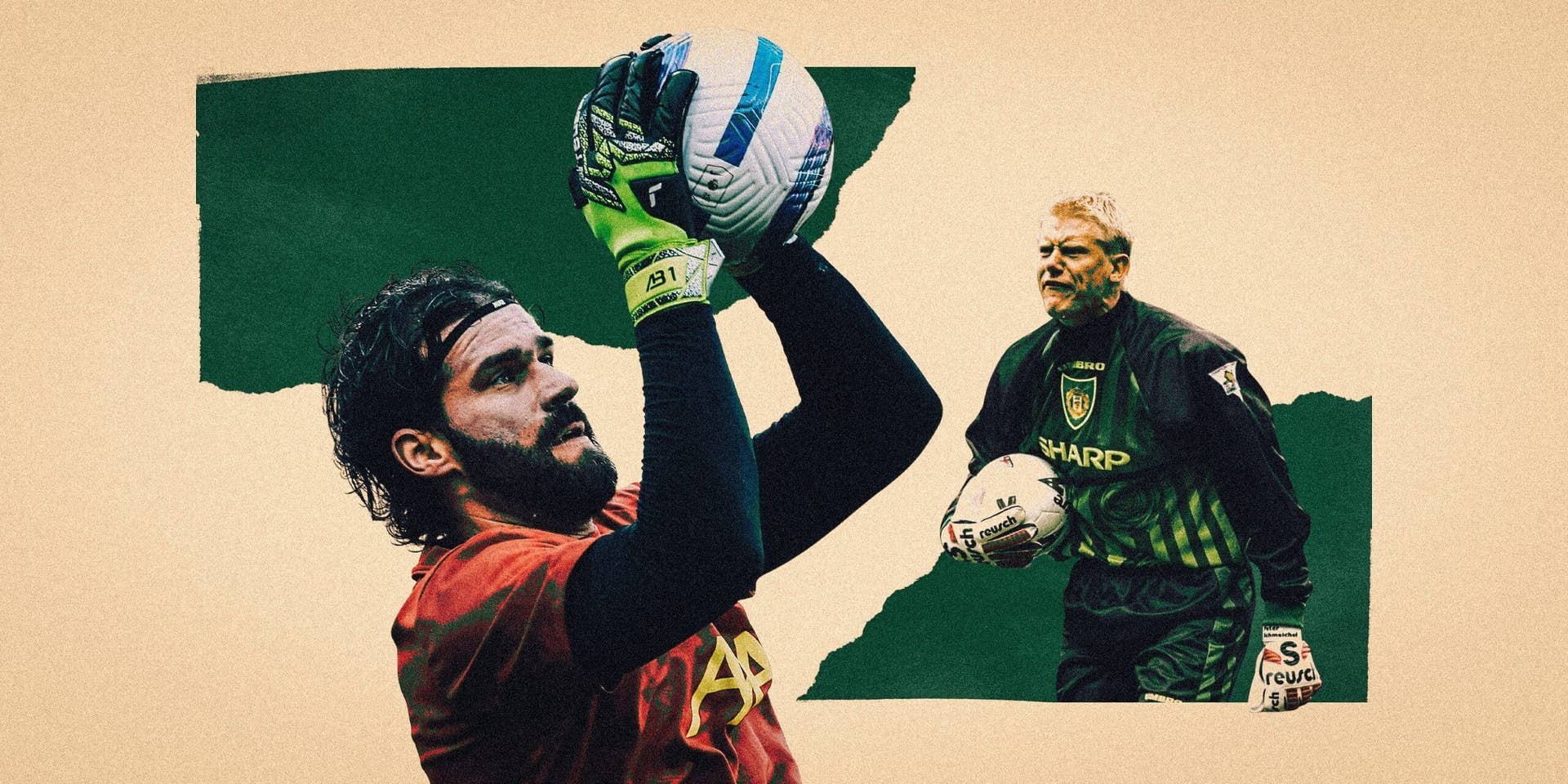 |
Goalkeepers Alisson (left) and Schmeichel wearing Reusch gloves. Photo: TA |
Goalkeepers Alisson (left) and Schmeichel wearing Reusch gloves. Photo: TA
When Liverpool defeated Tottenham 5-1 in April to win the Premier League, Alisson Becker followed in the footsteps of a legendary goalkeeper and etched his name in the record books. He became the first goalkeeper since Manchester United's Peter Schmeichel in 1999 to win the title wearing gloves manufactured by Reusch.
Five years prior, during Liverpool's previous Premier League triumph, Alisson wore Nike gloves. However, in 10/2023, the Brazilian goalkeeper signed a contract with Reusch, the same brand he used while playing for Novo Hamburgo in his home country. This was considered a victory for the German company, which also supplies gloves to former Liverpool goalkeeper Caoimhin Kelleher.
Reusch is one of the oldest glove manufacturers. In 1973, they produced the first gloves made of pure latex for Sepp Maier, goalkeeper for Bayern Munich and West Germany. After Maier's World Cup victory in 1974, the latex glove line flew off the shelves.
Before this innovation, goalkeeper gloves were primarily made with the same materials and technology as gardening gloves. Some goalkeepers used woolen gloves for warmth, or even played barehanded. In the 1940s, Amadeo Carrizo, the goalkeeper with over 500 appearances for River Plate, was one of the first to wear gloves in matches. In 1966, legendary goalkeeper Gordon Banks used the same gloves he wore during England's 1966 World Cup victory for gardening before discarding them.
Going further back, in 1885, British manufacturer William Sykes designed specialized leather gloves for goalkeepers, recognized as the first patented product of its kind. Nearly 100 years later, at the 1970 World Cup, Banks wore experimental gloves with rubber dimples on the palms. These gloves helped him make what is considered one of the greatest saves in World Cup history, denying Pele a headed goal.
Over time, the technology and aesthetics of goalkeeper gloves have significantly improved. The outdated, bulky, and cumbersome designs of the 1980s and 1990s are now a distant memory. Today, top goalkeepers view their gloves as a "second skin"—lightweight and personalized for each hand. Modern gloves feature various cuts, ventilation holes, rubberized punching zones, and strapless or adhesive wrist closures.
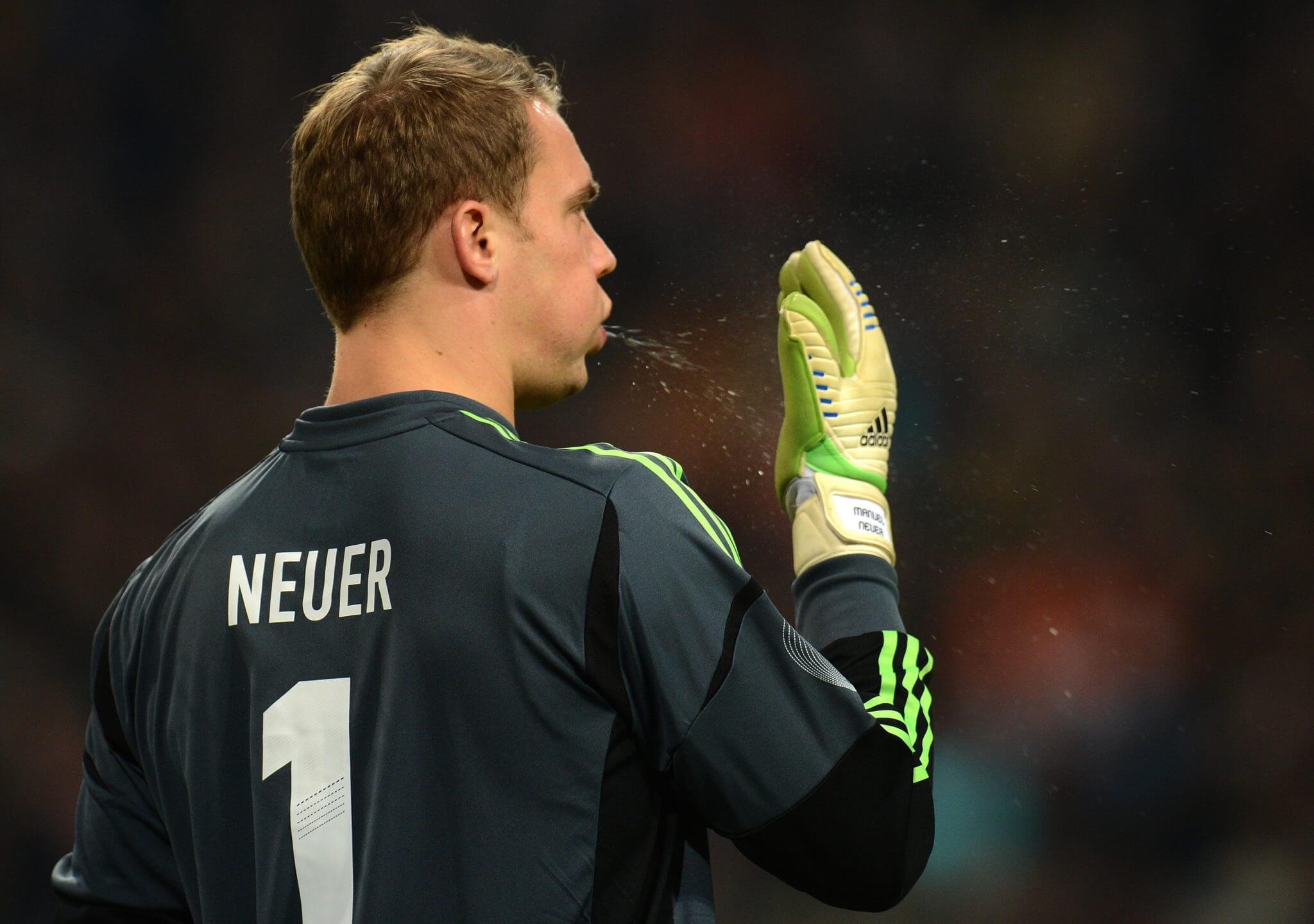 |
Goalkeeper Neuer during a match for the German national team in 2012. Photo: Reuters |
Goalkeeper Neuer during a match for the German national team in 2012. Photo: Reuters
At the lower end of the price spectrum, around 33 USD, gloves are often made from a combination of fabrics and compounds like mesh and rubber. These gloves usually have a flat design, quite different from the custom-made gloves used by the world's top goalkeepers. Professional-grade gloves retail between 106 USD and 239 USD. These are constructed from premium materials, such as synthetic rubber used in diving equipment.
In terms of design, a typical glove features a wrist wrap with an adhesive closure. Many manufacturers are now modifying this closure, either removing it altogether or using latex wrist wraps for enhanced ball control. Ventilation holes are also increasingly common to reduce sweat, and the punching zone of the glove has seen significant research and development in recent years.
This is evident in Adidas's design, with nearly 300 spines on the backhand of the Predator Pro Hybrid model. This is the glove Gianluigi Donnarumma wore during the Euro 2021 final when Italy defeated England. In addition to spines, some gloves have specialized punching zones designed to improve handling and deflection, allowing for more natural and comfortable movement.
Safety is another key area of focus. Adidas is researching ways to protect goalkeepers' fingers from hyperextension. They've introduced a new technology that incorporates fingertip spines to reduce impact from the ball.
A unique design favored by some goalkeepers is the four-finger glove, preferred by those who want the most natural, barehanded feel. Aaron Ramsdale is one such example. Before Ramsdale, former England goalkeeper Robert Green also opted for this unusual style in the later years of his career because his right little finger was repeatedly broken or dislocated.
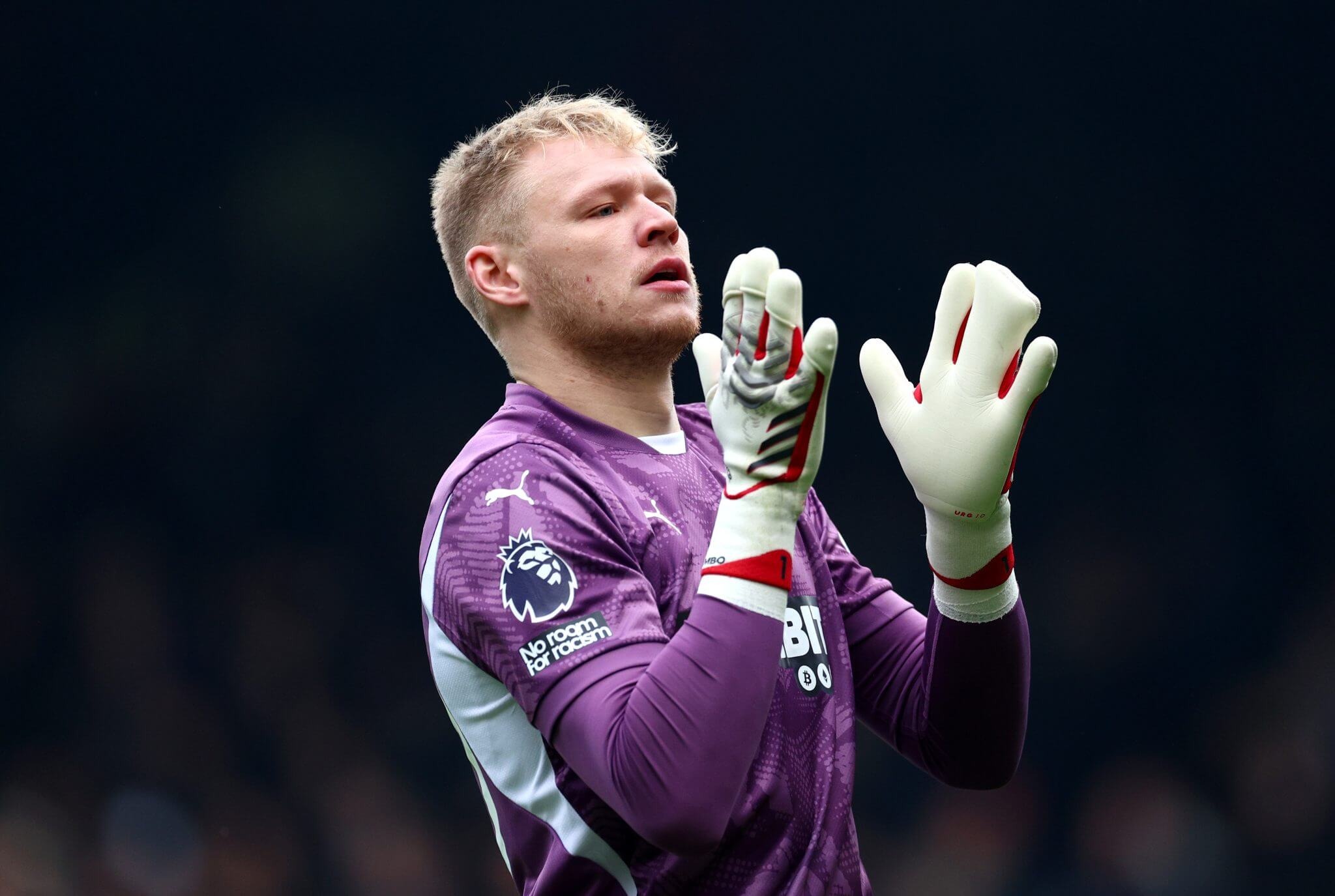 |
Goalkeeper Ramsdale and his four-finger glove during a Premier League match last season. Photo: Reuters |
Goalkeeper Ramsdale and his four-finger glove during a Premier League match last season. Photo: Reuters
Professional goalkeepers typically find the grip of their gloves diminishes after about a month of use. According to Reusch, Peter Schmeichel used 50 to 60 pairs per season, not including those worn during training.
Today, match gloves and training gloves can differ. Many goalkeepers now train with slippery, harder-to-control gloves, making errors more likely. This practice is intentional. Training sessions have pre-planned drills, allowing goalkeepers to anticipate situations and maintain high focus. They perform well, rarely make mistakes, and don't face the same challenges as in a real match. Therefore, many goalkeepers train with different gloves to improve their adaptability and prepare themselves mentally for the unpredictable nature of competitive play.
On the field, spectators often see goalkeepers wiping their gloves to remove excess moisture or applying petroleum jelly, like Manchester United's Andre Onana. Experts suggest Onana's actions serve two purposes: extending the lifespan of the gloves and enhancing grip.
"Slightly moistening the gloves activates the latex particles inside, improving grip," says Bob Fidler, Reusch's UK manager. "Before using gloves for the first time, you should wash them to moisturize them and remove any residual adhesive. Washing them after each use also increases their durability. Goalkeepers sometimes spit on their gloves, partly out of habit. In reality, it doesn't significantly affect the gloves' quality."
Reusch's analysis found no benefit to applying petroleum jelly to gloves. Therefore, it's plausible that Onana's practice is a superstition or simply a way to boost his confidence.
Vy Anh



